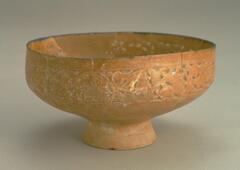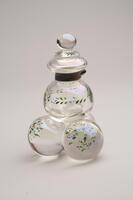5 UMMA Objects
5 UMMA Objects

Japanese (Japanese (culture or style))
Tsuba (sword guard) with iris design
1775 – 1785
Gift of Mr. and Mrs. Robert T. Weston
1978/2.8

Iranian (Iranian)
Footed Bowl with openwork floral scroll design
1167 – 1232
Museum Purchase
1957/1.61

Artist Unknown
Three spears base on top of spear front, spear finial, iridescent color, hand painted
1875 – 1975
Gift in loving memory of Donald Maxwell Robiner from his family
2010/1.233

Indian (Indian (South Asian))
Oriya manuscript (unidentified), leaf: A Meeting in the Forest (pair with 1997/2.40)
19th century
Gift of Professor Walter M. and Nesta R. Spink
1985/2.144

Indian (Indian (South Asian))
Oriya manuscript (unidentified), folio: A Courtier Visits an Ascetic. (Images and text on both sides; pair with 1985/2.144)
19th century
Gift of Professor Walter M. and Nesta R. Spink
1997/2.40
Loading…
